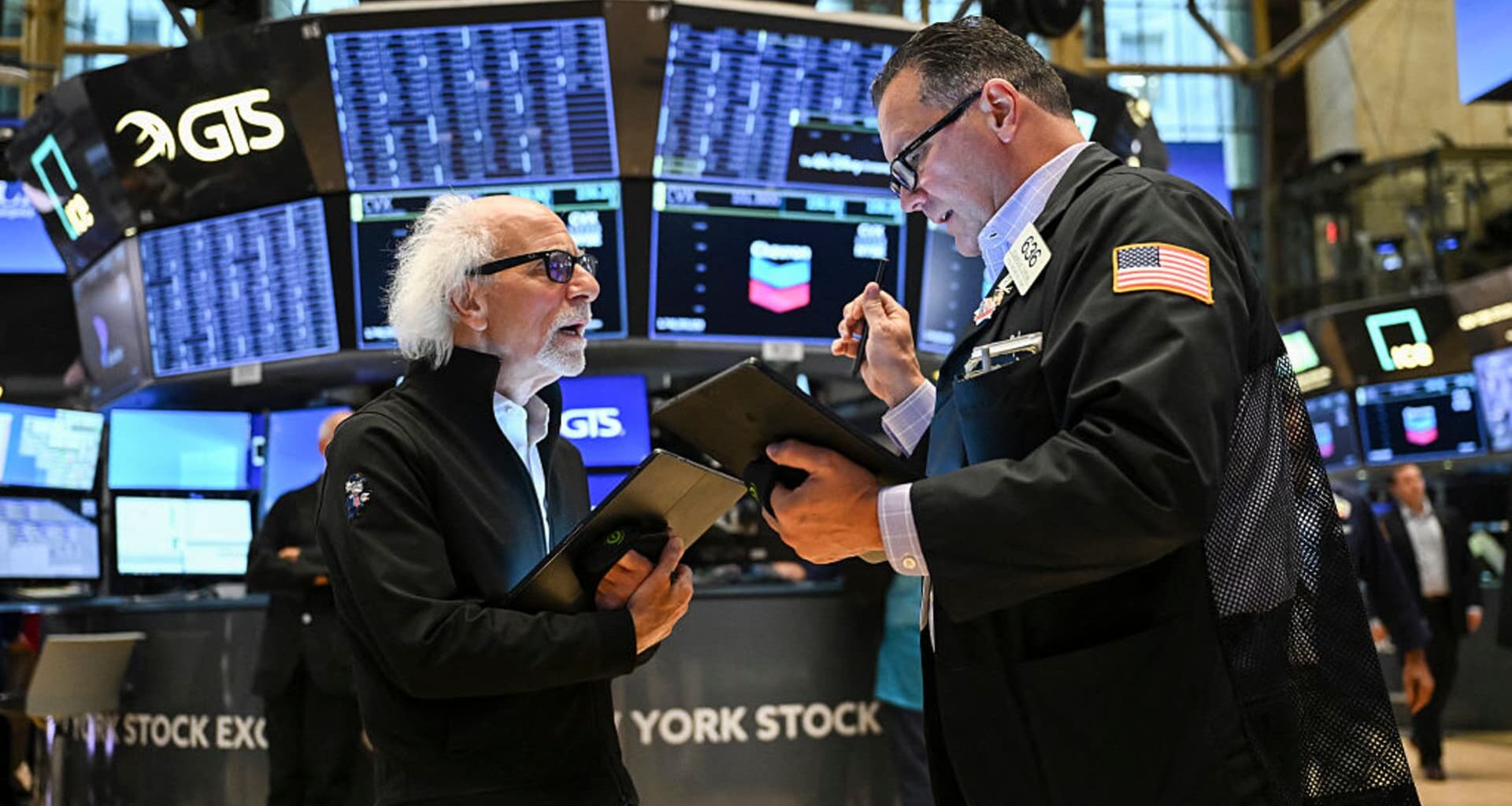Traders work on the floor of the New York Stock Exchange (NYSE) at the opening bell on July 18, 2025, in New York City.
Angela Weiss | AFP | Getty Images
The S&P 500 scaled to an all-time high Friday before easing from those levels, as traders pored through the latest earnings reports and new U.S. economic data.
The benchmark traded 0.1% lower, while the Nasdaq Composite dropped 0.1%. The Dow Jones Industrial Average lagged, falling 192 points, or 0.4%. A 3% post-earnings slide in American Express dragged the 30-stock average lower.
Data released Friday reflected a drop in consumers’ fears about tariff-induced inflation down to their lowest levels since February. The University of Michigan’s Survey of Consumers for July reflected overall consumer sentiment rose 1.8% from June to 61.8, coming out exactly in line with the estimate and at the highest level since February.
Major U.S. stock indexes are heading towards a winning week, lifted by data releases pointing to a strong U.S. economy and a slew of better-than-expected corporate earnings results. The S&P 500 is up 0.8% this week, while the Nasdaq and Dow have advanced 1.8% and 0.2%, respectively.
About 60 S&P 500 companies have posted second-quarter results thus far. Of those, 86% have beaten analyst expectations. On Thursday, PepsiCo and United Airlines shares both popped after the respective companies beat analyst estimates on earnings. Those follow solid results from big banks like JPMorgan and Goldman Sachs earlier in the week.
Shares of Netflix slid 4%, despite posting an earnings beat on Thursday. Shares of 3M were also down slightly even after the company exceeded analysts’ estimates on top and bottom lines.
“It’s a risk-on environment, and while there’s chatter about Fed cuts, the reality is more nuanced,” said Ken Mahoney, CEO at Mahoney Asset Management. “Historically, bull cycles tend to perform better without rate cuts and the first cut is often a bearish signal, though there’s a valid case to be made this time around, especially with inflation cooling and GDP growth projections still intact after we got through the threat of massive tariffs.”

